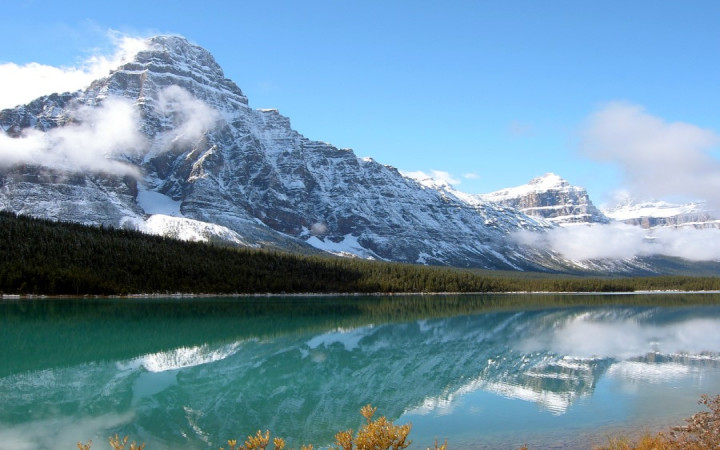Today’s Wonder of the Day was inspired by korbin. korbin Wonders, “Why do mountains form?” Thanks for WONDERing with us, korbin!
Have you ever taken the time to look at the world around you and marvel at its natural beauty? From huge oceans and dense forests to sweeping plains and rolling hills, nature paints a picture that can take your breath away.
Maybe one of the most beautiful sights on Earth, though, is a majestic mountain range. From the Himalayas to the Rocky Mountains, there’s just something about those tall, craggy peaks that stirs the soul.
Have you ever WONDERed how mountains got there, though? Did they fall out of the sky and land where they are? Not quite! Read on to learn more about how mountains form.
There are a few ways that mountains can form. One thing these methods have in common is that they all take millions of years!
Most mountains formed from Earth’s tectonic plates smashing together. Below the ground, Earth’s crust is made up of multiple tectonic plates. They’ve been moving around since the beginning of time. And they still move today as a result of geologic activity below the surface. On average, these plates move at a rate of about one to two inches each year.
When two tectonic plates come together, their edges can crumple. Think of what happens to an aluminum can when you crush it. It’s a bit like that! The result of these tectonic plates crumpling is huge slabs of rock being pushed up into the air. What are those called? Mountains, of course! Specifically, these are called “fold mountains.”
For example, the tectonic plates that lie underneath India and Asia crashed into each other over 25 million years ago. What happened? The Himalayas, including Mount Everest, formed. And they’re still pushing against each other. That means the Himalayas are still growing even today!
Sometimes, instead of crashing together, two tectonic plates grind against each other. Occasionally, this results in one plate lifting up and tilting over. The result? A fault-block mountain range! One example is the Sierra Nevada mountain range in California.
Other times, a unique type of mountain is made when one plate is pushed below the other, pushing magma to the surface. This is how volcanoes, like Mount Fuji, are made. Volcanic activity below Earth’s surface can also result in new mountains when magma is pushed up toward the surface. When that happens, it cools and forms hard rock. The result is dome mountains.
Mountains can also form by way of erosion. In an area with a high plateau, rivers and streams can carve away stone in the form of deep channels. Over millions of years, what is left is a mountain between deep river valleys!
The world is full of incredible rock formations—there’s even an entire mountain range in the Atlantic Ocean! Have you ever seen a mountain range? Is there a mountain you’d most like to visit? Maybe you’d even like to climb a mountain one day. Would you rather explore mountain ranges through pictures? Their greatness may still blow you away.
Standards: NGSS.ESS1.C, NGSS.ESS2.A, NGSS.ESS2.B, C3.D2.Geo.2, CCRA.L.3, CCRA.L.6, CCRA.R.1, CCRA.R.2, CCRA.R.4, CCRA.R.10, CCRA.SL.1




